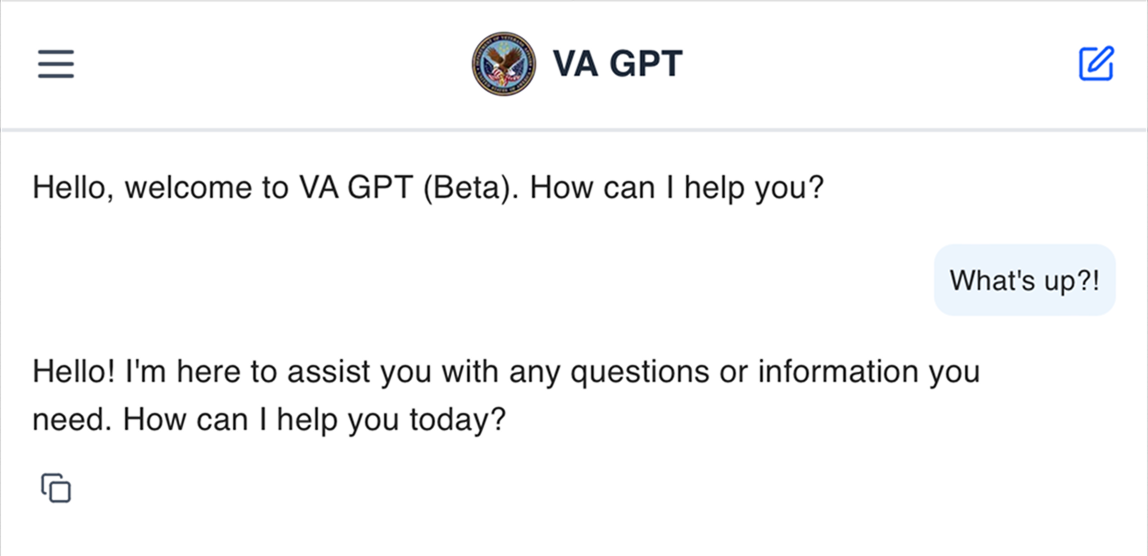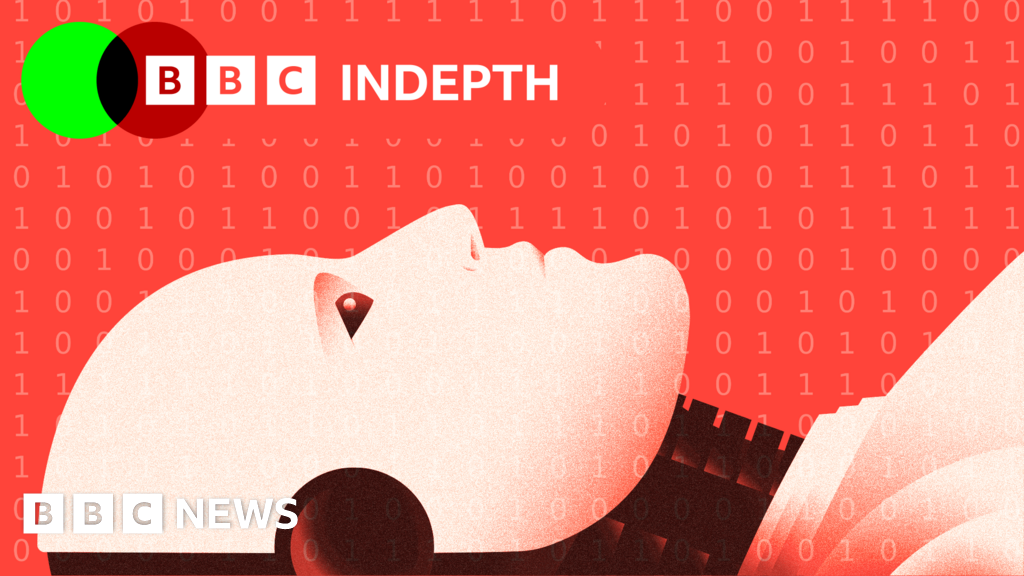ChatGPT "Absolutely Wrecked" at Chess by Atari 2600 Console From 1977
-
The LLM doesn't have to imagine a board, if you feed it the rules of chess and the dimensions of the board it should be able to "play in its head".
That assumes it knows how to play chess. It doesn't. It know how to have a passable conversation. Asking it to play chess is like putting bread into a blender and being confused when it doesn't toast.
But human working memory is shit compared to virtually every other animal. This and processing speed is supposed to be AI's main draw.
Processing speed and memory in the context of writing. Give it a bunch of chess boards or chess notation and it has no idea which it needs to remember, nonetheless where/how to move. If you want an AI to play chess, you train it on chess gameplay, not books and Reddit comments. AI isn't a general use tool.
if you feed it the rules of chess and the dimensions of the board it should be able to “play in its head”.
You'd save a lot of time typing, if you spent a little more reading...
-
Yeah, but it's chess...
The LLM doesn't have to imagine a board, if you feed it the rules of chess and the dimensions of the board it should be able to "play in its head".
For a human to have that kind of working memory would be a genius level intellect and years of practice at the game.
But human working memory is shit compared to virtually every other animal. This and processing speed is supposed to be AI's main draw.
It doesn't have a head like that. It places things in a conceptual space, not a numerical space. To it, a number is just an adjective, like a colour. It is learning to play chess by looking for language-like patterns in the game's transcript. It is never attempting to model the contents of the board in it's "mind".
-
if you feed it the rules of chess and the dimensions of the board it should be able to “play in its head”.
You'd save a lot of time typing, if you spent a little more reading...
You seem to be missing what I'm saying. Maybe a biological comparison would help:
An octopus is extrmely smart, moreso than even most mammels. It can solve basic logic puzzles, learn and navigate complex spaces, and plan and execute different and adaptive stratgies to humt prey. In spite of this, it can't talk or write. No matter what you do, training it, trying to teach it, or even trying to develop an octopus specific language, it will not be able to understand language. This isn't because the octopus isn't smart, its because its evolved for the purpose of hunting food and hiding from predators. Its brain has developed to understand how physics works and how to recognize patterns, but it just doesn't have the ability to understand how to socialize, and nothing can change that short of rewiring its brain. Hand it a letter and it'll try and catch fish with it rather than even considering trying to read it.
AI is almost the reverse of this. An LLM has "evolved" (been trained) to write stuff that sounds good, but has little emphasis on understanding what it writes. The "understanding" is more about patterns in writting rather than underlying logic. This means that if the LLM encounters something that isn't standard language, it will "flail" and start trying to apply what it knows, regardless of how well it applies. In the chess example, this might be, for example, just trying to respond with the most common move, regardless of if it can be played. Ultimately, no matter what you input into it, an LLM is trying to find and replicate patterns in language, not underlying logic.
-
machine designed to play chess beats machine not designed to play chess at chess!
Fascinating news!
Why people are upvoting this drivel is beyond me.
Too many people forget that specialized, purpose-driven software is often if more effective and efficient. LLMs and other AI are nice when you don't have a properly defined spec or a flexible algorithm but you pay, literally, for the convenience.
-
Why the special qualifier of "computerized" chess? Do humans regularly lose to Atari's at chess? LLMs are computerized too.
I meant a specialized application, like the Atari one that beat the LLM.
-
machine designed to play chess beats machine not designed to play chess at chess!
Fascinating news!
Why people are upvoting this drivel is beyond me.
Why are so many people mad when it's pointed out that the shitty chatbots are just shitty chatbots.
-
machine designed to play chess beats machine not designed to play chess at chess!
Fascinating news!
Why people are upvoting this drivel is beyond me.
40 year old machine designed to play chess*
-
This post did not contain any content.
I think people in the replies acting fake surprised are missing the point.
it is important news, because many people see LLMs as black boxes of superintelligence (almost as if that’s what they’re being marketed as!)
you and i know that’s bullshit, but the students asking chatgpt to solve their math homework instead of using wolfram alpha doesn’t.
so yes, it is important to demonstrate that this "artificial intelligence" is so much not an intelligence that it’s getting beaten by 1979 software on 1977 hardware
-
This post did not contain any content.
It's AI, not AGI. LLM's are good at generating language just like chess engines are good at chess. ChatGPT doesn't have the capability to keep track of all the pieces on the board.
-
Its because of all the people saying that LLMs can reason and think and the human brain works just like an LLM and... some other ridiculous claim.
This shows some limitations on LLMs.
But humans not trained (made) for chess would make stupid mistakes too
-
This post did not contain any content.
In other news, my toaster absolutely wrecked my T.V. at making toast.
-
This post did not contain any content.
How did alpha go do?
-
It's AI, not AGI. LLM's are good at generating language just like chess engines are good at chess. ChatGPT doesn't have the capability to keep track of all the pieces on the board.
They're literally selling to credulous investors that AGI is around the corner, when this and to a lesser extent Large Action Models is the only viable product they've got. It's just a demo of how far they are from their promises
-
They're literally selling to credulous investors that AGI is around the corner, when this and to a lesser extent Large Action Models is the only viable product they've got. It's just a demo of how far they are from their promises
Is there a link where I could see them making these claims myself? This is something I’ve only heard from AI critics, but never directly from the AI companies themselves. I wouldn’t be surprised if they did, but I’ve just never seen them say it outright.
-
This post did not contain any content.
This is useful for dispelling the hype around ChatGPT and for demonstrating the limits of general purpose LLMs.
But that's about it. This is not a "win" for old school game engines vs new ones. Stockfish uses deep reinforcement learning and is one of the strongest chess engines in the world.
EDIT: what would be actually interesting would be to see if GPT could be fine-tuned to play chess. Which is something many people have been doing: https://scholar.google.com/scholar?hl=en&q=finetune+gpt+chess
-
Is there a link where I could see them making these claims myself? This is something I’ve only heard from AI critics, but never directly from the AI companies themselves. I wouldn’t be surprised if they did, but I’ve just never seen them say it outright.
"We are now confident we know how to build AGI as we have traditionally understood it. We believe that, in 2025, we may see the first AI agents “join the workforce” and materially change the output of companies" https://blog.samaltman.com/reflections
"We fully intend that Gemini will be the very first AGI"
https://venturebeat.com/ai/at-google-i-o-sergey-brin-makes-surprise-appearance-and-declares-google-will-build-the-first-agi/"If you define AGI (artificial general intelligence) as smarter than the smartest human, I think it's probably next year, within two years" -Elon Musk https://www.reuters.com/technology/teslas-musk-predicts-ai-will-be-smarter-than-smartest-human-next-year-2024-04-08/
-
"We are now confident we know how to build AGI as we have traditionally understood it. We believe that, in 2025, we may see the first AI agents “join the workforce” and materially change the output of companies" https://blog.samaltman.com/reflections
"We fully intend that Gemini will be the very first AGI"
https://venturebeat.com/ai/at-google-i-o-sergey-brin-makes-surprise-appearance-and-declares-google-will-build-the-first-agi/"If you define AGI (artificial general intelligence) as smarter than the smartest human, I think it's probably next year, within two years" -Elon Musk https://www.reuters.com/technology/teslas-musk-predicts-ai-will-be-smarter-than-smartest-human-next-year-2024-04-08/
Thanks.
Well, I don’t think OpenAI knows how to build AGI, so that’s false. Otherwise, Sam’s statement there is technically correct, but kind of misleading - he talks about AGI and then, in the next sentence, switches back to AI.
Sergey’s claim that they will achieve AGI before 2030 could turn out to be true, but again, he couldn’t possibly know that. I’m sure it’s their intention, but that’s different from reality.
Elon’s statement doesn’t even make sense. I’ve never heard anyone define AGI like that. A thirteen-year-old with an IQ of 85 is generally intelligent. Being smarter than the smartest human definitely qualifies as AGI, but that’s just a weird bar. General intelligence isn’t about how smart something is - it’s about whether it can apply its intelligence across multiple unrelated fields.
-
It's AI, not AGI. LLM's are good at generating language just like chess engines are good at chess. ChatGPT doesn't have the capability to keep track of all the pieces on the board.
LLMs would be great as an interface to more specialized machine learning programs in a combined platform. We need AI to perform tasks humans aren't capable of instead of replacing them.
-
A chess-specific algorithm beat a language model at chess. Shocking!
Try training a chess model. Actually I think it's already been done, machines have been consistently better at chess than humans for a while now.
A fairer comparison would be Eliza vs ChatGPT.
-
This post did not contain any content.
A fairer comparison would be Eliza vs ChatGPT.





